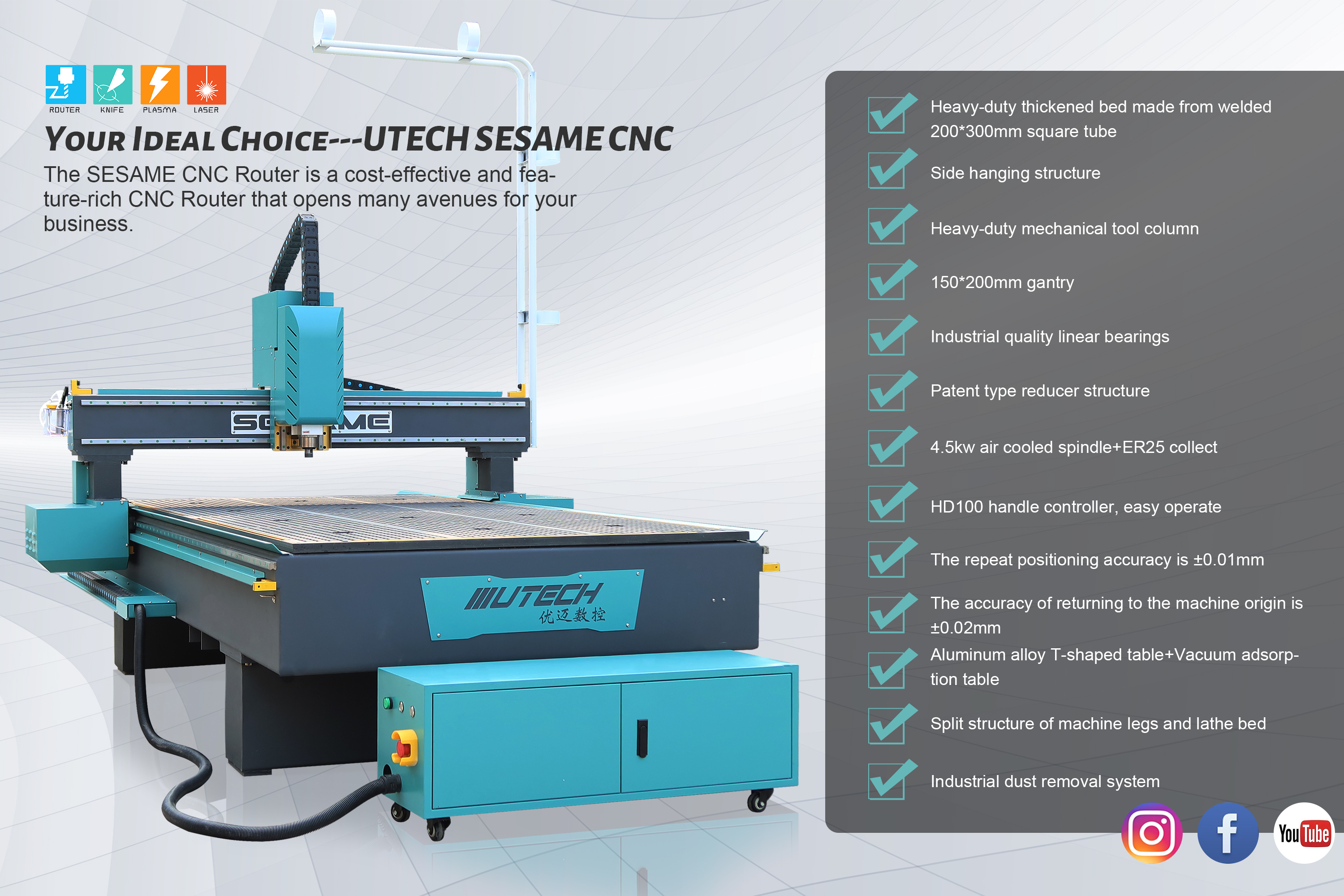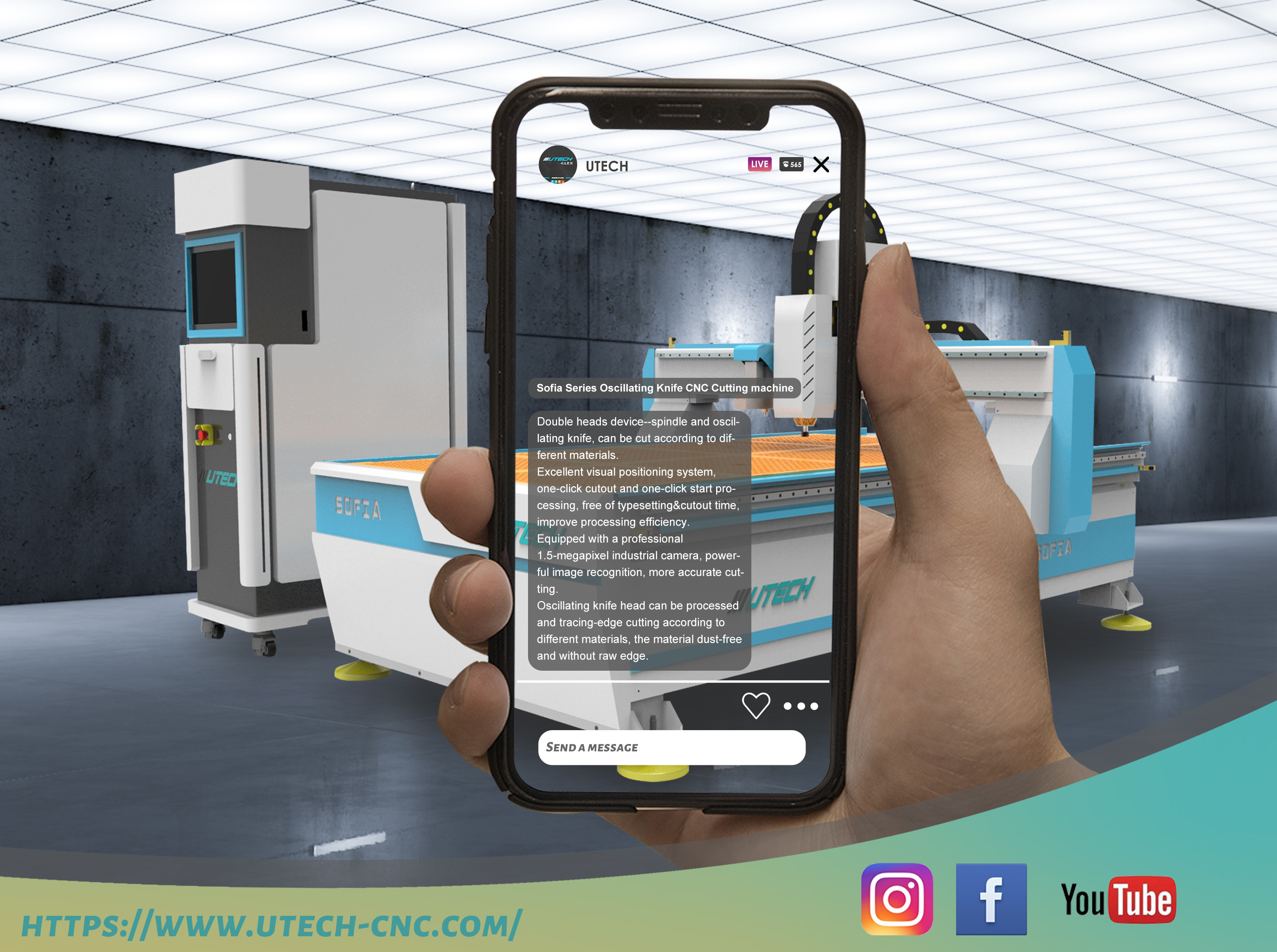- All
- Product Name
- Product Keyword
- Product Model
- Product Summary
- Product Description
- Multi Field Search
Views: 0 Author: Site Editor Publish Time: 2025-10-24 Origin: Site







CNC routers (computer numerical control routers) are one of the most versatile tools in modern manufacturing and creative industries. Whether you're producing signage, furniture, decorative panels, or precision engineered parts, CNC routers offer exceptional precision, efficiency, and flexibility. However, before investing in a CNC router, one of the most common questions users ask is, "What materials can I engrave and cut with a CNC router?" Let's explore the various materials suitable for CNC milling and engraving, and learn how different CNC machines perform on each material.
1. Wood—The Most Common Material for CNC Routers
2. Acrylic and Plastics – Smooth Edges and High-Definition Finishes
3. Aluminum and Non-ferrous Metals – Precision and Strength
4. Foam, Rubber, and Soft Materials—Ideal for Packaging and Prototyping
5. Medium-density fiberboard (MDF) and composite panels—Smooth, reliable engraving
6. Stone and Marble – Artistic Engraving with Power and Precision
7. Carbon Fiber and Composites – Advanced Industrial Uses
Wood is by far the most widely used material for CNC routers. From hardwoods like oak, maple, and walnut to engineered woods like MDF, plywood, and particleboard, CNC routers for woodworking can handle it all. CNC routers use high-speed spindles and precision cutting tools to carve, engrave, and cut intricate patterns into wood for furniture production, cabinet doors, decorative wall panels, and signage.
For professional studios, three-axis or four-axis CNC routers are capable of producing both flat and curved wooden parts. Their compatibility with advanced software, such as ArtCAM, VCarve, and Aspire, further enhances engraving accuracy and creative flexibility.
Another popular category is acrylic and plastic materials. Acrylic CNC routers produce clean, polished edges without additional machining, making them ideal for advertising signs, lighting panels, and decorative displays.
Materials such as PVC, ABS, HDPE, and polycarbonate can also be cut and engraved with ease. Using the appropriate feed rate, sharp drill bits, and dust extraction systems ensures a smooth surface and prevents melting of the material. For acrylic machining, users typically use a CNC router with design software like CorelDRAW or Adobe Illustrator to create intricate engravings and text.

While wood and acrylic are common, modern metal CNC routers are capable of cutting and engraving lightweight metals such as aluminum, brass, and copper. These materials require a more robust machine frame, higher spindle power, and appropriate cooling or lubrication systems.
CNC metal cutting machines with rigid bed structures and high-precision linear guides ensure stability during high-speed machining. Applications include aluminum signs, control panels, nameplates, and mechanical parts.
When combined with Fusion 360 or SolidWorks, users can create complex 3D contours and perform high-precision engraving for industrial components or prototype projects.
CNC routers are also well-suited for working with foam, rubber, and other soft materials used in packaging, model making, and product prototyping.
A CNC engraving machine equipped with a vacuum table and oscillating blade system enables smooth, precise cuts without distortion. Materials such as EVA foam, PU foam, and polyethylene are widely used for custom packaging inserts, architectural models, or signage lettering.
For these applications, integration with software such as Type3 or Ucancam allows for efficient nesting and material optimization, saving time and reducing waste.

Medium-density fiberboard (MDF) and other composite materials are the preferred materials for furniture, display panels, and decorative panels. MDF's uniform density makes it ideal for engraving fine details with a CNC router.
A CNC router equipped with a vacuum table and dust collector ensures stable material retention and clean operation. Medium-density fiberboard (MDF) allows for deep engraving and smooth edges, making it ideal for both functional and artistic designs.
Some heavy-duty CNC routers can even carve and cut stone materials like marble, granite, and engineered stone.
These CNC stone routers feature water-cooled spindles and reinforced mechanical structures to handle the hardness of the stone. Common applications include tombstone carving, decorative stone patterns, and architectural elements.
Diamond-coated drill bits and specialized CAD/CAM software ensure fine details and long tool life even in hard materials.
Carbon fiber and composites are increasingly popular in the aerospace, automotive, and sporting equipment industries.
CNC routers equipped with high-speed spindles and rigid gantry structures can precisely cut these high-performance materials, maintaining strength while achieving lightweight designs.
These applications require precise motion control, typically achieved using servo motors, ball screws, and advanced control systems such as Syntec or DSP controllers to ensure smooth operation and accurate results. The versatility of a CNC router lies in its ability to adapt to a wide range of materials—from soft foam to hard metal. When selecting a machine, consider material type, thickness, and application requirements. By understanding your material needs and selecting the right equipment, you can unleash the full potential of CNC technology and achieve professional-grade precision, efficiency, and creativity in every project. If you're still unsure about which CNC machine to choose, please contact UTECH for expert advice. UTECH is a professional CNC equipment manufacturer based in Jinan, China, offering one-stop CNC solutions. With a dedicated R&D team and factory, we support customized, high-quality CNC equipment.

























